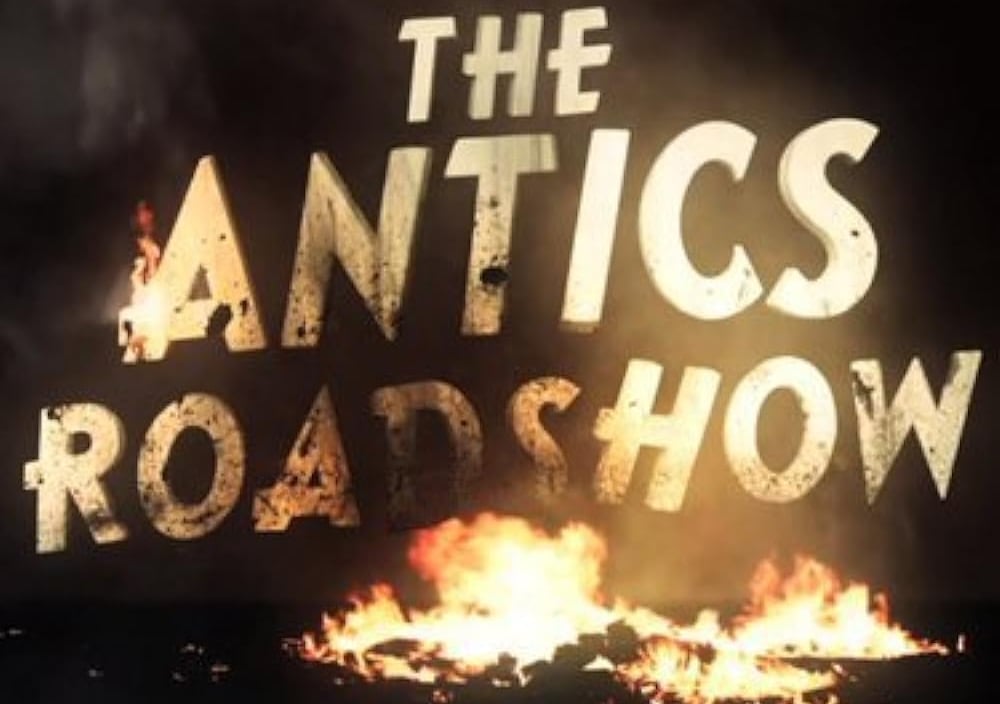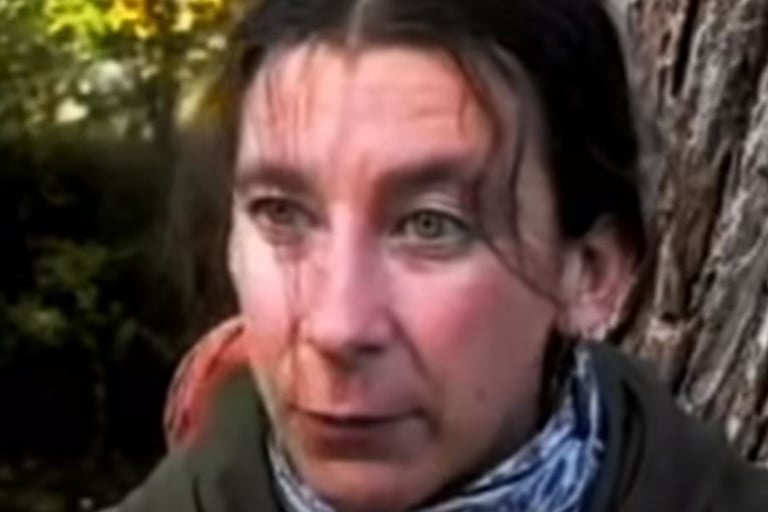Revisting "The Antics Roadshow", Banksy's Other Documentary
“My work is really about ‘who are you? What do you believe in? How did you come to those beliefs? What are the sources of those beliefs? Have you ever questioned those beliefs?’ If not, why not?” - Joey Scaggs
VISUAL ARTREVIEWS
The Chierophant
2/14/20246 min read


A large portion of the writing on this site serves as a sort of rumination on the nature of art: what is the purpose of art, what can be considered art, and what, if any, are the responsibilities of an artist in the modern age? While these questions can (and arguably should) be asked when encountering any form of creative expression, there is one entry into the artistic sphere that aligns deeply with these meditations. That is Banksy’s 2011 documentary for the BBC entitled “The Antics Roadshow”.
There are few artists more intimately aware of both art’s inherent ability to distill social or political messages into a single astute image while simultaneously illuminating the outlandish economic machinations that can adulterate the medium. Banksy’s anonymous yet meteoric rise through the art scene has been documented ad nauseum but arguably the most impressive aspect of his career is the irony that upon his entry the mainstream pantheon of the fine art world, the targets of his subversive and political works eventually became his fiscal supporters. His subsequent philanthropy work (with a substantial focus on Palestinian liberation) positioned Banksy as a graffiti “Robin Hood” somehow stealing from the rich, while overtly criticizing their motives and lifestyles, to give to the marginalized. Many other have covered his career at length and while that is not the purpose of this writing, his unique ability capture the surrealistic zeitgeist of modern existence through darkly comic imagery, to thrive within the very system he critiques, and leverage this system for positive social change uniquely positions him as an experienced evaluator of art as a tool for critiquing modern life.
“The Antics Roadshow”, a documentary produced and directed by the artist, was released on the BBC on August 13th, 2011 during a multi-program “Takeover” of the network. The film explores a myriad of topics: the accessibility of art and civic impact, the sometimes inadvertent beginnings of cultural movements, the tenuous grasp of institutional social control. The full film is currently streaming on YouTube (content warning for language and nudity) and despite it being over 5 years since it’s upload, it apparently remains relatively unknown, having just over 11 thousand views at the time of publication. It’s a fun and enlightening watch, recommended for anyone interested in art or subsversive action, filled with moments of comedy, drama, and inspiration. Coincidently released just days after a generation defining period of upheaval, 2011 England riots resulting from police killing an unarmed man, it begins with mission statement of sorts: “In the good old days…people didn’t just take to the streets to take stuff – they took to the streets to give something back. These are the stories of people who took on the authorities to bring chaos to the streets….But in a good way.”
The subjects of the film fall into three major - often overlapping - categories: highlighting individuals who entered the public gaze through unique actions in fateful circumstances, so called “pranksters” who use creative expression to challenge normative conventions, and most importantly, examining people who us art as a medium to spark social change. Each of these subjects are given a brief vignette to discuss how and why they do what they do, filtered through Banksy’s keen, irreverent eye. Upon the film’s release, some reviewers remarked how the documentary is am ambling mess, “a curious mix of actions and causes, set side-by-side with no specific overall point to be made”. While that’s a fair surface level analysis, a deeper viewing illuminates some of the film’s more prescient and coherent through lines, namely the impact of sometimes intentional and other times accidental actions to change an individual and society… and in some cases, these actions even effect humanities’ collective consciousness, cracking the foundation of the whole social order.
(EDITORS NOTE: The following discusses some of the subjects of the film. I would suggest watching it before proceeding to be able to truly experience it in its intended form).
The first group of individuals explore the motif of consequence and impact, consisting of those who made inadvertent decisions with subsequently massive reverberations for society. While it could be argued that some of these situations have little to do with creation or expression (e.g. the man who’s tumble in an art museum resulted in damages to art valued at half a million dollars) they serve a greater thematic purpose. For example, there is a man who creates a national uproar by defacing a statue with a strip of sod during a protest – indicating that even minuscule gestures can be used as chum to incite a nationalistic feeding frenzy. These scenes show the fragility of state power when faced with spontaneous action, where a snap decision by a rogue individual can shatter the illusion of institutional control as easily as a Ming Dynasty vase shatters when faced with an untied shoelace on an errant foot (it’ll make sense if you watch the film).
Among the next group are a viral video star (before this was an aspirational occupation), collectives doing massive public performance art pieces (some innocuous and others as examples of the public’s cooperative power against the state), and a man who planted outrageous news stories meant to challenge belief systems while making a mockery of mainstream media (decades before “MSM” was even a colloquial term). Scattered throughout the film, this group of provocateurs serve the purpose of showing multiple ways creation can manifest while reinforcing the idea that sometimes the most genuine artistry appears in the places we least expect – far from the confines of galleries, theaters, and auction houses. Furthermore, it embraces the Dadaist principal of challenging traditional mediums of expression while demystifying the act of creation and rebuking the idea that individuals are powerless to create change against the entrenched hierarchical structure.
If one man can erase half a million British pounds from a museums coffers with a single errant step, the final group explores the outsized impact a concerted group of individuals can create in society writ large. These vignettes highlight purposeful and intentional actions that shook legacy establishments to their very core. One recounts the highly publicized Yes Men’s impersonation of Dow Chemical which caused a multi-billion dollar decline in stock price. This also category also includes one of the most prescient pieces of the film, where 4 women, armed with bolt cutters, crowbars and hammers, broke into an arms factory and “disabled” a jet being sold to a genocidal regime in East Timor. This act is extremely relevant in America today given the support of the IDF in Gaza, though it’s easy to envision a less wholesome outcome in today’s age.
Together, these three groups of people challenge the notion that individuals cannot incite change and provokes questions regarding the true strength of seemingly untouchable institutions. While the film is largely filled with uplifting examples of art as protest, there are a few aspects that highlight how times have changed since the film’s release. The piece with Remy Guillard could be considered irresponsible today, as it predicted the rise of what eventually became the largely exploitative “prank YouTube” genre. On a more existential note, we now live in a different time, where tracking devices are in every pocket and cameras are fixated on every corner of the urban landscape. Without intentional subterfuge, many of the actions highlighted could, in this dystopic surveillance state we currently reside, result in repercussions prior to act being committed.
Additionally, some of the actions are distinctly protected by the time and culture of where much of the film takes place, a magical place without the Patriot Act and today’s modern brand of state violence. That being said, change is the only constant, and the evolution of power structures and surveillance networks will undoubtedly be met with a change in the nature and form of protest. In fact, it could be posited that this change is happening now, right before our eyes. While shapes of civil disobedience and mass protest certainly have brought about important social changes in the past both near and far, when up against a system that often puts capital above human life, there seems to be a growing realization that fire often must be fought with economic fire.
The biggest takeaway may be simply next time a person or group is vilified by mainstream media, remember “G. Davis is innocent, OK!”


“The fear of prison is used by the state to control us – to keep us not doing the right actions that would make the world more just. And in that way, we have- we are in prison in a way because we aren’t doing what’s right” - Lotta Kronlid
